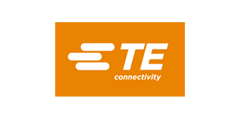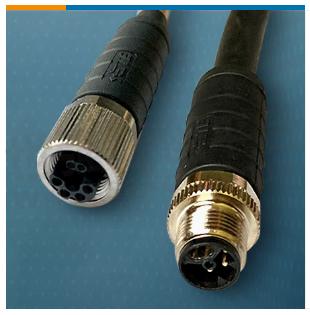TE Connectivity IEC63171-7 Standard Specifies Hybrid Connectors with SPE, Supporting Powerful Devices up to 11kW and 16A

TE Connectivity (TE), a world leader in connectors and sensors, has been a driving force behind the new IEC 63171-7 international electrotechnical standard, helping Single Pair Ethernet (SPE) interconnect technology to gain faster acceptance in the industry.

Under the new standard, SPE-M12 hybrid interfaces, which TE expects to launch later this year, will enable the reliability, durability, and safety required in harsh industrial environments. The technology will allow higher levels of power to be transmitted in production plants and is a promising option for robotic systems, as well as servo and three-phase drives.
TE pushed for standardization as a founding member of the SPE Industrial Partner Network, a global network of more than 50 organizations. Adopted in May 2023, the IEC 63171-7 standard has been met with broad approval throughout the industry and has already been implemented by trade associations and companies around the world. The IEC 63171-7 standard specifies hybrid interfaces with SPE and power contacts in the M12 format – both with screw locking and push-pull quick locking. The standard applies to shielded, free, and fixed circular connectors for power and data transmission. SPE-M12 hybrid interfaces fit almost seamlessly into existing Ethernet infrastructures and help to enable simple plug-and-play connections. Separate pins for data and power transmission contribute to higher performance.
The new hybrid connection standard is a further development of IEC 63171-6, which defines M8 hybrid connectors, but does not consider the well-known M12 industry standard used in IP65 and IP67 environments. The new standard now accounts for SPE-M12 hybrid connectors for different applications with power classes from 8A to 16A and from 50V to 600V. While previous concepts with Power over Data Line (PoDL) are limited to 50W, SPE-M12 hybrid connectors support powerful devices up to 11kW and 16A. In addition, the hybrid configuration of the IEC 63171-7 standard offers greater flexibility in network-based power distribution than a point-to-point connection such as PoDL. Thus, it is possible to distribute higher current levels to several cascaded power devices.
- +1 Like
- Add to Favorites
Recommend
- Rosenberger Hochfrequenztechnik GmbH & Co. KG and ept GmbH Develop automotive Hybrid Connectors
- Classification and Typical Application of Fiber Optic Connectors
- PHOENIXCONTACT M12 Hybrid Connectors for Single Pair Ethernet
- The Difference between FFC Connectors and FPC Connectors
- DIN EN 1100 Certified WSMP® Coaxial Connectors, 45% Smaller than Standard SMP Connectors
- What is the Role of Industrial Connectors? What Types of Industrial Connectors Can Be Divided into?
- MTA Launched A 48 V unit for Renault and Dacia Mild Hybrid Vehicles
- The Development of High-Voltage Connectors
This document is provided by Sekorm Platform for VIP exclusive service. The copyright is owned by Sekorm. Without authorization, any medias, websites or individual are not allowed to reprint. When authorizing the reprint, the link of www.sekorm.com must be indicated.






























































































































































































































































































































































































































































































































































































































































































































































































































































































